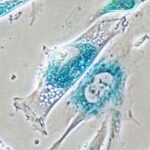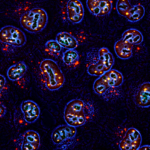Lien vers Pubmed [PMID] – 17217038
Curr. Top. Microbiol. Immunol. 2007;313:49-71
SUMO modification (sumoylation) plays important roles in nucleo-cytoplasmic transport, maintenance of sub-nuclear architecture, the regulation of gene expression and in DNA replication, repair and recombination. Here we review recent evidence for SUMO’s role in protecting genomic integrity at both the chromosomal and the DNA level. Furthermore, the involvement of sumoylation and of specific SUMO targets in cancer is discussed.


